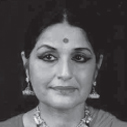Krishna Geeti, commonly known as ‘Krishnattam’, is a dance drama in Sanskrit composed by Manaveda, a scion of the royal family of the Zamorin Raja of Calicut. The Zamorins had played an important role in the cultural and political history of Kerala for nearly 900 years from the 9th to the middle of the 18th century. They had all along been patrons of learning and the Arts, attracting leading scholars and poets of the day to their court at Calicut.
Manaveda was a contemporary of Melpathur Narayana Bhattathiri, author of the famous Sanskrit work, Narayaneeyam. Born in circa 1585, he grew up as a scholar and a man of art, guided and encouraged by his uncle, Manavikrama, who reigned as the Zamorin Raja in the middle of the 17th century. Manaveda was the Zamorin from 1655 to 1658. There is evidence to show that Manaveda completed his work Krishnattam in 1653, five years before he died.
Though records are lacking in details, the origin of Krishnattam can more or less be traced. Having witnessed Koodiyattam, the orthodox Sanskrit drama performances of the Chakkiars and various types of folk dances which were common in those days, Manaveda felt that it might be worthwhile to have an assorted art form, more literary and at the same time, more appealing to the common people. Jayadeva`s famous work Geeta Govindam and Melpathur’s Narayaneeyam seem to have inspired his genius to compose another devotional work on the story of Krishna, his favourite deity, more suited for performance on stage.
This dance-drama is divided into eight acts called stabakas – ‘Avataram’, ‘Kaliyamardanam’, ‘Rasakreeda’, ‘Kamasavadham’, ‘Svayamvaram’, ‘Banayudham’, ‘Vivida Vadham’, and ‘Svargarohonam’. Each act is staged on a separate night. After ‘Svargarohana’, the last act on the ascent of Lord Krishna to Vaikuntha (heavenly abode) after the fulfillment of his life’s purpose, the first act ‘Avataram’, (Incarnation) has to be re-enacted on the next night, as if to indicate that Lord Krishna is still with us. However, the other acts can be staged individually and it is not necessary that the entire drama consisting of the eight acts should be staged on successive days at one stretch. All the main stories in Sri Krishna’s life are touched upon by the author in these eight acts, some elaborately, and others tersely, depending on their importance, devotional appeal and suitability for performance on stage.
The most unique and distinguishing feature of Krishnattam is the use of masks for some of the characters. The masks are larger than life, with the features exaggerated, some even deformed. The design and colour scheme of the masks vary from the simple to the complex, and depend on the type of character represented. The colour scheme reveals symbolic values and its application is governed by the sense of contrast and competence to catch the eye. They are examples of excellent craftsmanship and show sophistication of design.
Krishnattam is an important land mark in the evolution of the Kerala stage, occupying an intermediate position between Koodiyattam and Kathakali, with affinities to both. It is far less complex than the other two art forms in the matter of abhinaya, as there is no attempt to interpret the text word by word. The emphasis is on the devotional aspect and this is brought about by graceful dances and devotional music. Except on one occasion in Rasakreeda, where the gopis also sing, supporting the background music, the characters throughout remain mute while on stage. Like Kathakali, women do not take part in the performance and all female characters are enacted by young boys. The costumes are similar to those in Kathakali, with the difference that unlike in Kathakali, even some of the female characters have a chutti around their jaws and chin.
The songs are sung in the Sopana style in which the Geeta Govindam songs of Jayadeva are even now sung in the Kerala temples. The instruments that are used in the Krishnattam stage are ‘Maddalam’, ‘Chengalam’, ‘Elatalam’, Conch and ‘Edakka’, the last two also on some auspicious occasions. ‘Chenda’ (drum) which is an important instrument in Kathakali is not used at all in Krishnattam. The popular Carnatic ragas adopted for singing are ‘Shankarabharanam’, ‘Kamboji’, ‘Todi’ and ‘Bhairavi’. Other ragas like ‘Kedaragoula’, ‘Natta’ and ‘Padi’ are also used. The talas adopted are ‘Chempada’, ‘Chemba’, ‘Atanda’ and ‘Panchari’.
There is only one solitary Krishnattam troupe at present. Previously, it was maintained by the Zamorin Rajas, but gradually with the introduction of several measures of land reforms in Kerala, the income of the Zamorins began to dwindle and it became difficult for them to maintain the troupe. The Krishnattam troupe was then transferred to the Guruvayur Devaswom, which has been maintaining it ever since.
Training which is systematised and strict took place in the palace kalari for six months during the rainy season. The first session was from sometime in May or June until Onam, a religious holiday, the date of which is based on the solar calendar and which occurs in the Malayalam month of Chingan sometime after August 15. The second session began after Onam and continued until Navaratri, a nine-day festival the date of which is based on the lunar calendar occurring in the Malayalam month of Kanni, sometime between October and November. The performance season begins on Vijayadashami day, the day after Navaratri.


